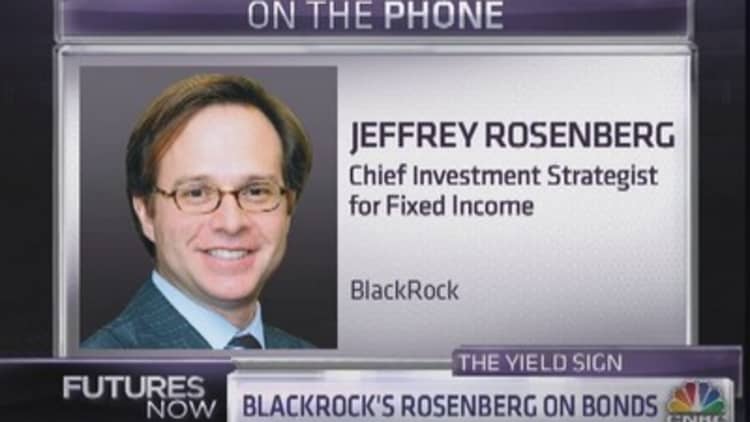
Is it time to love one of the market's most hated asset classes? As the economy improves, fixed income experts are advising investors to exit shorter-term Treasurys and move into the much–maligned long bonds.
"The best value in the fixed income market right now is precisely where people have been leaving, and that's the long end of the yield curve," said Jeff Rosenberg, BlackRock's chief investment strategist for fixed income. "What people have wrong is they think that the front end of the yield curve is a safe place to hide out. But if the economy does what most people expect, this is the riskiest part of the fixed income market."
Given that they are supported by the stimulative actions of the Federal Reserve, shorter Treasurys could be in for a rough ride if the economy grows as expected.
"If we are moving to a more self-sustaining recovery, the risk in bond markets always shifts down the curve," George Goncalves, the head of U.S. rates strategy at Nomura, wrote to CNBC.com. "This is especially pertinent given that long-term rates have largely adjusted already over the course of 2013."
(Read more: US Treasurys move lower following Wall Street rally)
The Fed has reiterated that even as it tapers its bond purchases, it will not look to increase the key federal funds rate until 2015. But the market may lose confidence that the Fed will wait that long, argues David Robin, co-head of financial futures and options at Newedge.
"Expectations are for the Fed to stay on hold to late 2015 and the market has been reasonably comfortable with the 'tapering is not tightening' viewpoint," Robin wrote to CNBC.com. "That all changed with the Fed policy move in December, and the largest risk is a rapid acceleration of expectational tightening pricing, which would have a much greater impact on the front end of the curve —3-year maturities and under."
Rosenberg says that in a scenario of normal growth, the two-to-five-year part of the yield curve could stop bending to the Fed's will.
If economic expectations simply "don't disappoint," then "this two-to-five-year part of the curve can become unhinged," Rosenberg said Tuesday on CNBC's "Futures Now."
So while he sees the 10-year yield rising by about 50 basis points, he says the yields on two-to-five-year Treasurys are "not going up 50 basis points, they're going up multiples of that, if we're right on our call here that the economy's going to do better, and the Fed's going to lose control."
(Read more: If this happens, 'get into your bomb shelter': Trader)
Because he sees the shorter end of the curve coming under much more pressure than the longer end, Rosenberg recommends buying longer-dated bonds, and selling shorter-dated ones.
—By CNBC's Alex Rosenberg. Follow him on Twitter: @CNBCAlex.
Editor's note: The writer is not related to analyst Jeff Rosenberg.
Watch "Futures Now" Tuesdays & Thursdays 1 p.m. ET exclusively on FuturesNow.CNBC.com!
Like us on Facebook! Facebook.com/CNBCFuturesNow.
Follow us on Twitter! @CNBCFuturesNow.



